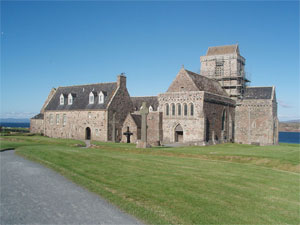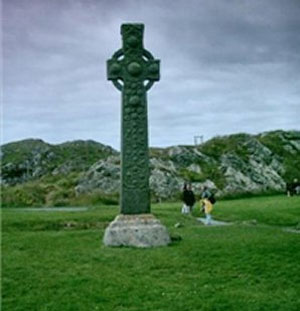Re: The Mahasiddha and His Idiot Servant, by John Riley Perk
Chapter 11: Commentary
During this time, when not attending to Rinpoche or matters of the Court, I was practicing the "meditation sadhana of the Glorious Coemergent Mother Vajrayogini." It was integrated in my everyday life like the sadhana had never begun nor ever ended. With Rinpoche throwing up red blood into the white sink, white on the outside, red on the inside, it was vast and spacious. In the middle of it is a lotus, corpse, and sun disk seat.
I repeated those lines over and over many times, having no realization of what they meant. But the series of visions in California dissolved my kleshas,39 enabling me to realize the blessings of the Jetsun Mother and the lineage gurus on a very experiential level Everything fell away at one point, even anything that I had understood about what was called Buddhism. The experience was so stunning that I became frozen, rather like having seen the head of Medusa. Rinpoche pointed this out to me. I longed for the comfort of just being in his company. I longed for our conversation without words. Like the moon, I longed to be in the warmth of the sun. I could teach, but I didn't know anything.
At this point, I think I could have stopped and become just a Pratyekabuddha person -- that is, someone who seeks enlightenment just for himself. Not that I was enlightened, but the path was continuing. What kept me from taking that route was the total generosity and unconditional love I had been given by my teachers, Trungpa Rinpoche, Khyentse Rinpoche, and His Holiness, Karmapa. My compassion was very primitive and reserved for only a few.
Although it was shocking at the time, I later appreciated Rinpoche's wisdom in telling me to go out on my own and to become a servant. This was the training I received in how to serve others. Through many trials and tribulations I learned from the people and beings that I served how to make the offerings that they wanted, not the offerings that I wanted to give them. Thus I began to have more compassion for the whole situation -- any situation.
Sometimes people would ask me questions about what had happened to me. When I began to explain, I found myself explaining experiences in Buddhist terms, because that's what I had been taught. It was the only explanation that made any sense in relationship to the story. So Buddhism returned as a path. I had attended seven of the twelve or so three-month seminaries that Rinpoche had given. But because of my ignorance and confusion, I retained little or no knowledge of the teachings. So for the next ten years after Rinpoche's death, I read and reread all the seminary transcripts. I also studied and read many other related Buddhist texts. In the beginning, I advanced very slowly in my knowledge and understanding. But I would go over them again and again. Then, gradually, I found I could understand some of the concepts.
When I became angry, depressed, disillusioned, confused, or fearful of how to proceed, my teachers were always there in my thoughts and in my dreams. It was as if we had never parted. And through them I found the compassion that I had so much wanted to give to others and that had eluded me for so long.
Now I am an old man with long white hair and I walk with a slight limp, sometimes supported by a wooden cane. My personal secretary, who is also a student of mine, is typing this manuscript on a computer. we are sitting together in a small cottage overlooking Merrymeeting Bay, in the state of Maine. From within emptiness, in the sky before us, innumerable forms of the chief Jetsunma and her retinue descend. As they dissolve into the top of her head, joy and power increase. From their speech comes a garland of consonant mantras, red and white. As they dissolve into her throat, energy and power increase. From their heart comes a stream of bodhichita, of the nature of the five wisdoms. As it dissolves into her heart, the wisdom of bliss and emptiness is born in her being. The devis dissolve each into each and they become inseparable. That is the inner offering. Then in the supreme palace of mahamudra there resides bodhisattva Caryamati. That is only a name, only a sign, mere sophistry. just as all dharmas have no reality, my very mind is groundless, rootless, beyond the extremes of conditions. Although many things occur, realize the appearance and mind as the nondual ungraspable dharmakaya. That is a description of the indescribable fourth abhisheka.40
There is a world beyond the one our projections and habitual patterns manifest. we act rather like the dog with the blindfold. Rinpoche always said that if the blindfold were to be removed too suddenly one would die of a heart attack. The sight of the real world, the total groundlessness and spaciousness, would cause such instant, terrifying fear that our hearts would burst. There is still even in this dark age, an enlightened lineage of beings and you are being invited. to join with them. Perhaps you will have to surrender some of your stuff-whatever you've collected. But if you have within you the desire to explore, to see, to hear, to taste, or smell to experience the universe, then you should be like a patient with an incurable disease and seek a teacher to become your doctor. Please, do not waste a minute to begin that endeavor.
There are many groups of people that form around the idea of studying the Buddhist teachings without a teacher. This is rather like going to a restaurant and attempting to eat the menu. I realize that it is done with the best of intentions, but still the possibility of having your trip exposed or transformed without a teacher is at best zero. There is no possibility of lineage here, which is the continuum of the heart of the Buddha. From a morality point of view one could become a Brahmin, or follower of the rule, which is not the ultimate point of the Buddhist teachings.
_______________
Notes:
39 Kleshas are habitual patterns or neurotic clingings.
40 From the sadhana of Vajrayogini.
During this time, when not attending to Rinpoche or matters of the Court, I was practicing the "meditation sadhana of the Glorious Coemergent Mother Vajrayogini." It was integrated in my everyday life like the sadhana had never begun nor ever ended. With Rinpoche throwing up red blood into the white sink, white on the outside, red on the inside, it was vast and spacious. In the middle of it is a lotus, corpse, and sun disk seat.
Look, look at your own mind.
Mind itself never existed.
This nonexistent mind
Is the great wonder of the variety of appearance.
Mind is merely appearance.
That mind of all sentient beings
Is the wisdom of great bliss,
Incomprehensible complete non-thought,
Appearing in the nature of that luminosity
For the desires of many sentient beings,
A variety of skillful means are sown.
By a variety of illusory activities
The warrior behaves like a lion,
Attaining the incomprehensible state.
This is the blessing of the Jetsun Mother.
The lineage gurus are like a variety of jewels
For the benefit of the worthy ones.
I repeated those lines over and over many times, having no realization of what they meant. But the series of visions in California dissolved my kleshas,39 enabling me to realize the blessings of the Jetsun Mother and the lineage gurus on a very experiential level Everything fell away at one point, even anything that I had understood about what was called Buddhism. The experience was so stunning that I became frozen, rather like having seen the head of Medusa. Rinpoche pointed this out to me. I longed for the comfort of just being in his company. I longed for our conversation without words. Like the moon, I longed to be in the warmth of the sun. I could teach, but I didn't know anything.
At this point, I think I could have stopped and become just a Pratyekabuddha person -- that is, someone who seeks enlightenment just for himself. Not that I was enlightened, but the path was continuing. What kept me from taking that route was the total generosity and unconditional love I had been given by my teachers, Trungpa Rinpoche, Khyentse Rinpoche, and His Holiness, Karmapa. My compassion was very primitive and reserved for only a few.
Although it was shocking at the time, I later appreciated Rinpoche's wisdom in telling me to go out on my own and to become a servant. This was the training I received in how to serve others. Through many trials and tribulations I learned from the people and beings that I served how to make the offerings that they wanted, not the offerings that I wanted to give them. Thus I began to have more compassion for the whole situation -- any situation.
Sometimes people would ask me questions about what had happened to me. When I began to explain, I found myself explaining experiences in Buddhist terms, because that's what I had been taught. It was the only explanation that made any sense in relationship to the story. So Buddhism returned as a path. I had attended seven of the twelve or so three-month seminaries that Rinpoche had given. But because of my ignorance and confusion, I retained little or no knowledge of the teachings. So for the next ten years after Rinpoche's death, I read and reread all the seminary transcripts. I also studied and read many other related Buddhist texts. In the beginning, I advanced very slowly in my knowledge and understanding. But I would go over them again and again. Then, gradually, I found I could understand some of the concepts.
When I became angry, depressed, disillusioned, confused, or fearful of how to proceed, my teachers were always there in my thoughts and in my dreams. It was as if we had never parted. And through them I found the compassion that I had so much wanted to give to others and that had eluded me for so long.
Now I am an old man with long white hair and I walk with a slight limp, sometimes supported by a wooden cane. My personal secretary, who is also a student of mine, is typing this manuscript on a computer. we are sitting together in a small cottage overlooking Merrymeeting Bay, in the state of Maine. From within emptiness, in the sky before us, innumerable forms of the chief Jetsunma and her retinue descend. As they dissolve into the top of her head, joy and power increase. From their speech comes a garland of consonant mantras, red and white. As they dissolve into her throat, energy and power increase. From their heart comes a stream of bodhichita, of the nature of the five wisdoms. As it dissolves into her heart, the wisdom of bliss and emptiness is born in her being. The devis dissolve each into each and they become inseparable. That is the inner offering. Then in the supreme palace of mahamudra there resides bodhisattva Caryamati. That is only a name, only a sign, mere sophistry. just as all dharmas have no reality, my very mind is groundless, rootless, beyond the extremes of conditions. Although many things occur, realize the appearance and mind as the nondual ungraspable dharmakaya. That is a description of the indescribable fourth abhisheka.40
There is a world beyond the one our projections and habitual patterns manifest. we act rather like the dog with the blindfold. Rinpoche always said that if the blindfold were to be removed too suddenly one would die of a heart attack. The sight of the real world, the total groundlessness and spaciousness, would cause such instant, terrifying fear that our hearts would burst. There is still even in this dark age, an enlightened lineage of beings and you are being invited. to join with them. Perhaps you will have to surrender some of your stuff-whatever you've collected. But if you have within you the desire to explore, to see, to hear, to taste, or smell to experience the universe, then you should be like a patient with an incurable disease and seek a teacher to become your doctor. Please, do not waste a minute to begin that endeavor.
There are many groups of people that form around the idea of studying the Buddhist teachings without a teacher. This is rather like going to a restaurant and attempting to eat the menu. I realize that it is done with the best of intentions, but still the possibility of having your trip exposed or transformed without a teacher is at best zero. There is no possibility of lineage here, which is the continuum of the heart of the Buddha. From a morality point of view one could become a Brahmin, or follower of the rule, which is not the ultimate point of the Buddhist teachings.
_______________
Notes:
39 Kleshas are habitual patterns or neurotic clingings.
40 From the sadhana of Vajrayogini.



